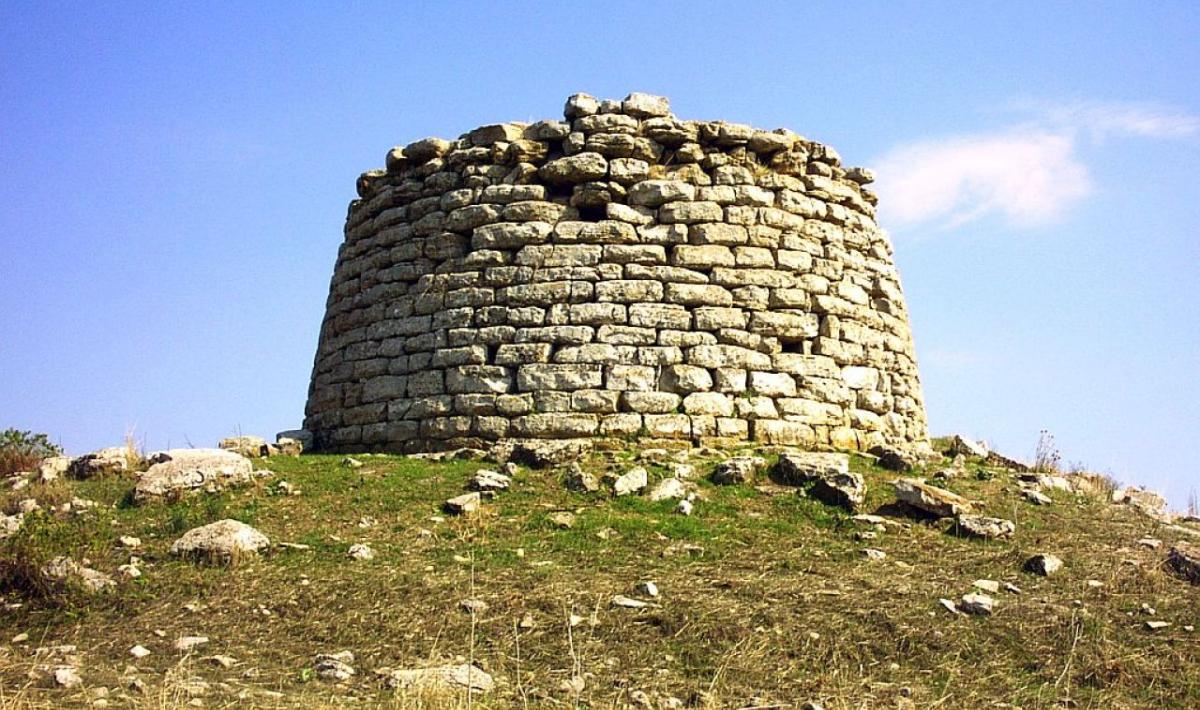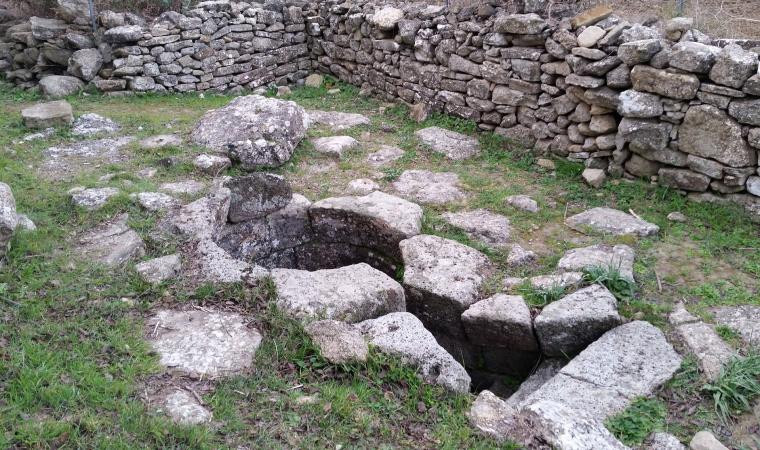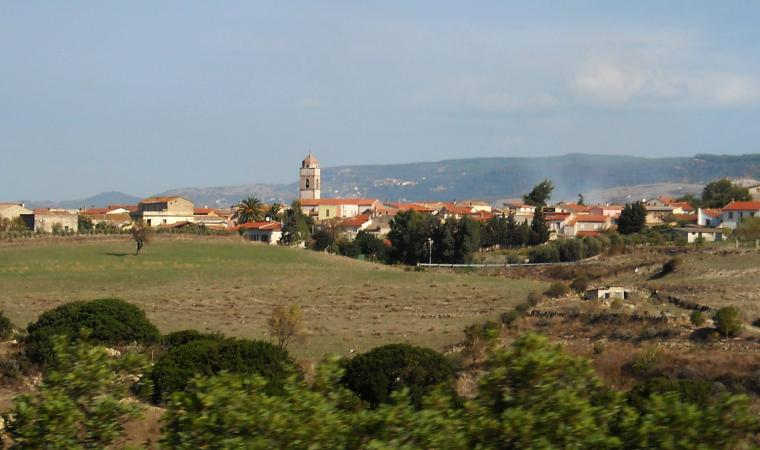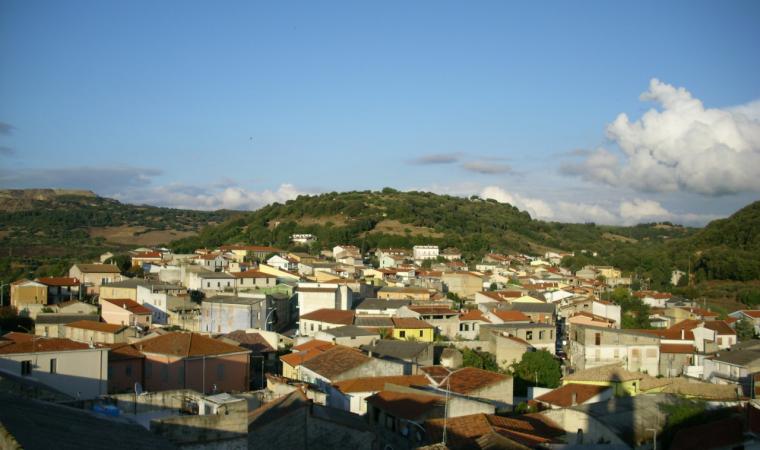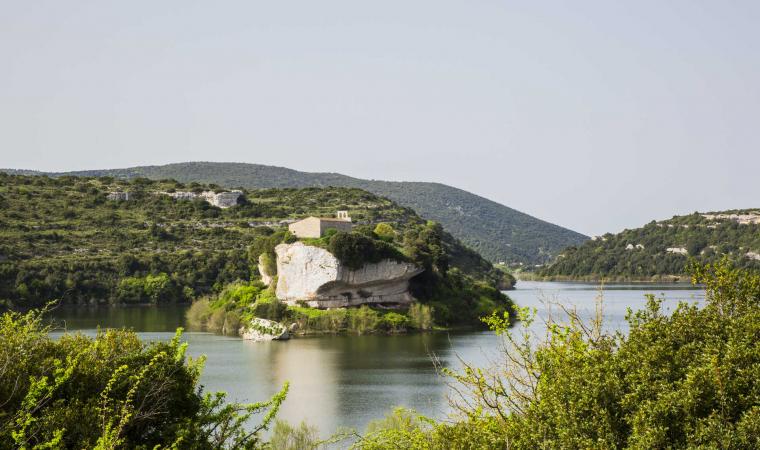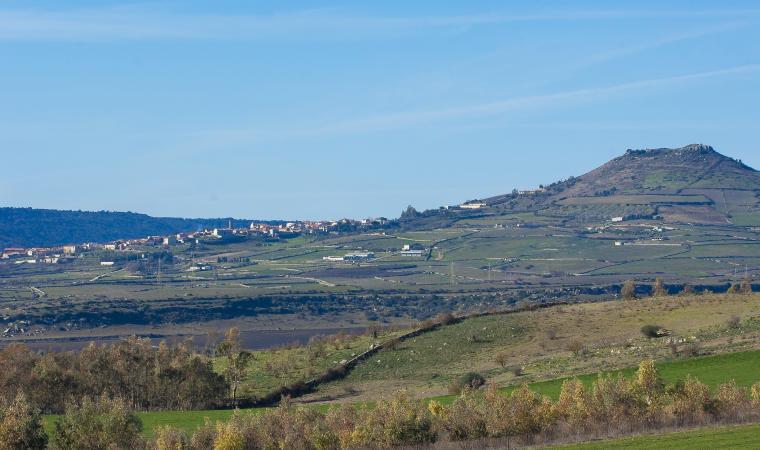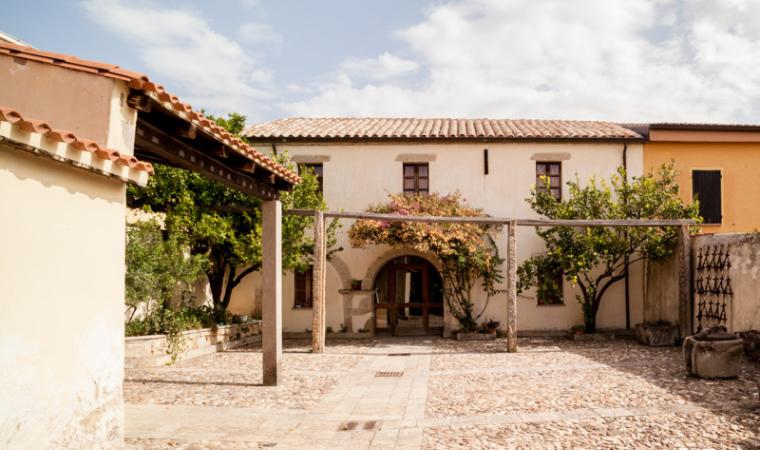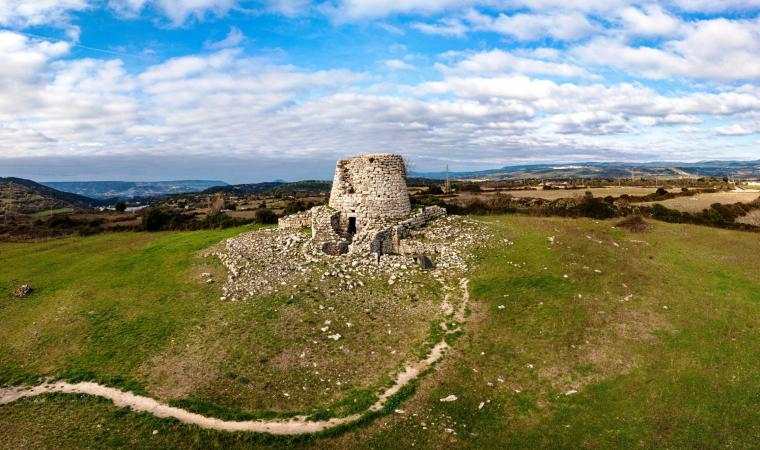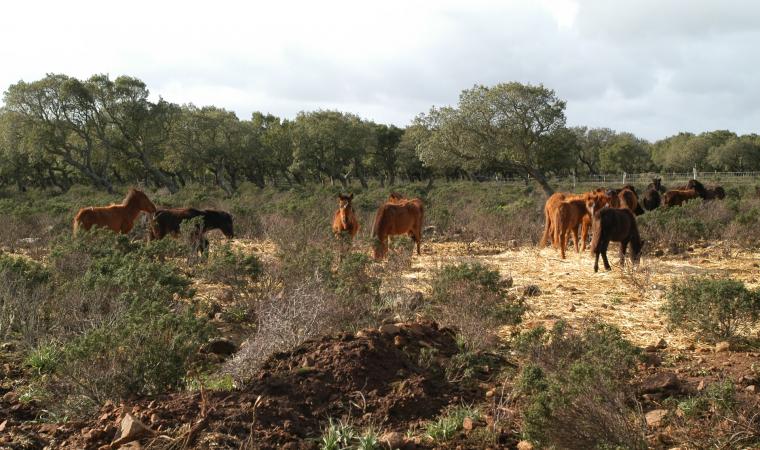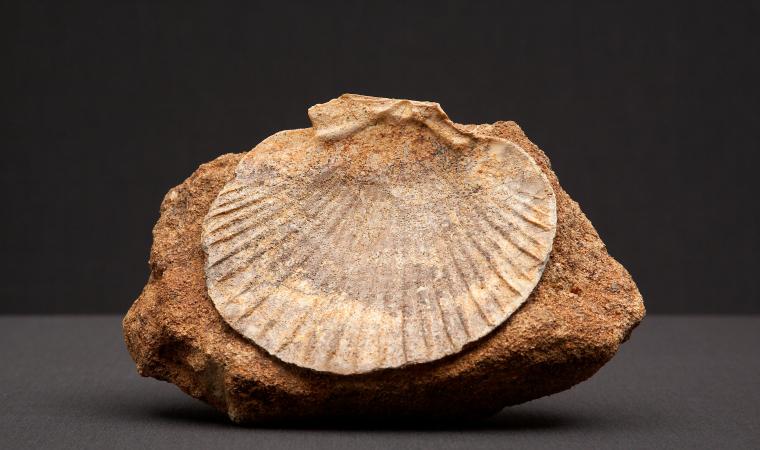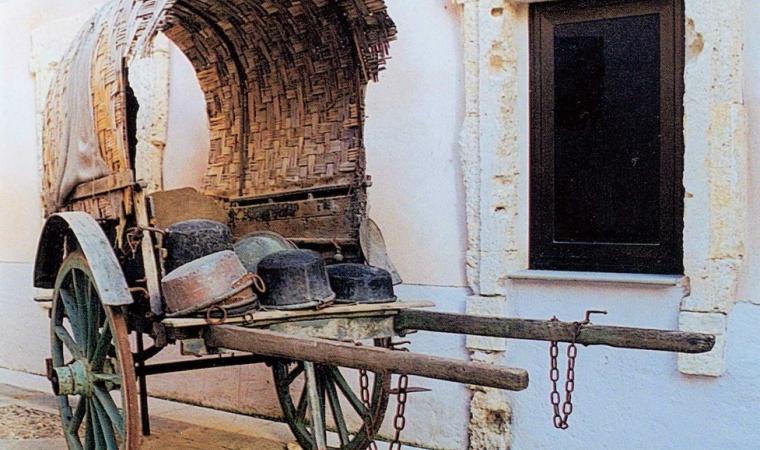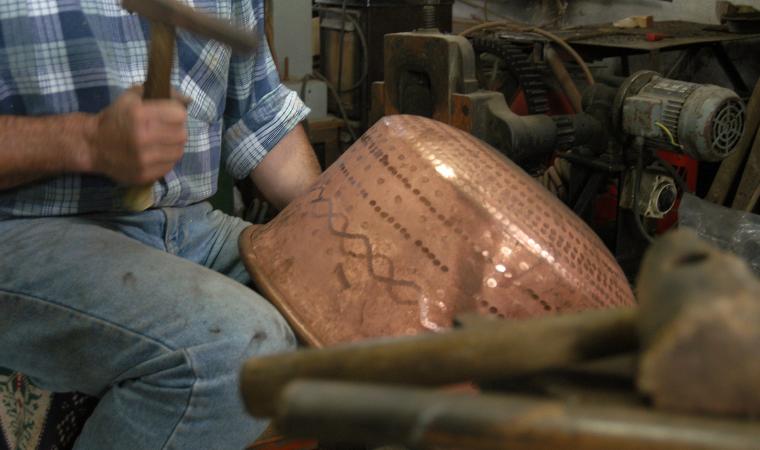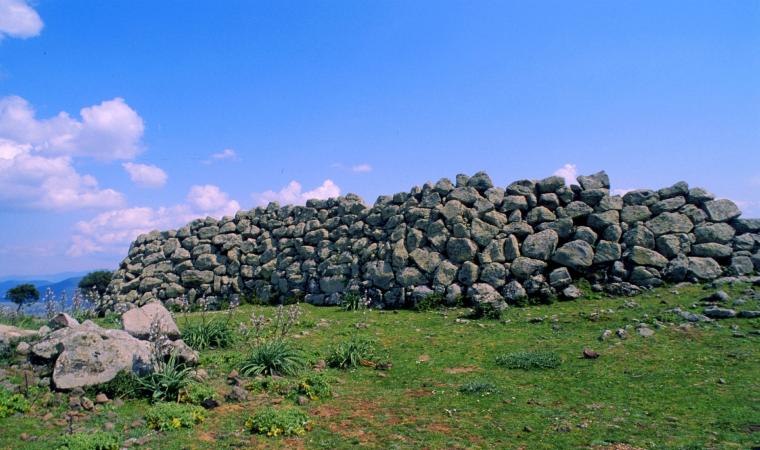It stands on the top of a hill like a sentinel, almost as if ‘protecting’ the memory of the times when the area was considerably important, from the Bronze Age to the Imperial era. The nuraghe Santu Millanu is located in the region of Part’e Alenza, in the territory of Nuragus, with a view of Sa Jara Manna, the largest and most famous giara, in the background. In Roman times, the settlement of Valenza was located here and was an important site along the road between Karalis and Ulbia. It is a quatrefoiled nuraghe, with a central tower (the keep), which is still about six metres high and surrounded by a bastion, barely detectable on the ground, with four circular towers in the corners. The construction material is limestone, obtained in large square blocks, arranged in even rows.
The entrance is partially underground and, over it, there is an architrave, just above which there is access to a small room. In the central chamber you will notice three niches forming a cross and six holes, which probably served to secure the beams supporting a wooden mezzanine. On the entrance wall, beside the right-hand niche, there was access to a staircase leading to a secondary room and perhaps a room located on the upper level. The room and the main bedroom are connected via a sort of small window.
Around the building, you will see traces of the village, particularly on the south side. The ‘Roman’ spaces were built on top of them and were identified thanks to the large number of artefacts found during the excavation campaigns. The name of the nuraghe comes from a church dedicated to San Gemiliano, a few hundred metres away in a southeastern direction: only a small trace of the foundation perimeter of the building of worship still remains and, in fact, it was presumably destroyed in the 19th century. A few steps from the nuraghe, you will find more evidence of human presence in the area during the Nuragic period: it is the sacred well of Coni, one of the smallest known to date, and you will be surprised by the care that was taken over cutting and positioning the blocks of basalt during its construction. Further east, in the Nurallao territory, you can admire the Giants’ Tomb of Aiodda, characterised by an ‘overturned boat’ shape and the reuse of an anthropomorphic menhir at the entrance. The last remains, in chronological order, that can be attributed to ancient Valenza are the ruins of a small Romanesque church, dedicated to Saint Mary, of which the perimeter of the church hall and the apse can still be identified, while a cemetery area extended all around it.

